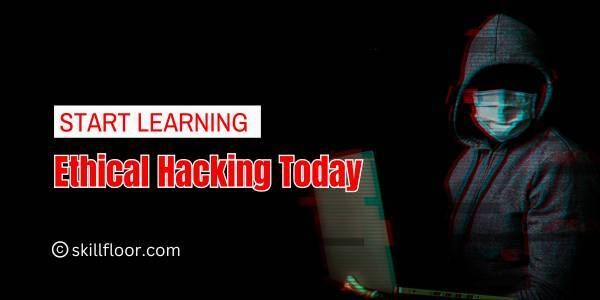Cybersecurity for Remote Work: Tips to Stay Secure While Working from Anywhere
Discover essential cybersecurity tips to ensure your remote work setup remains secure. Learn how to protect your data while working from anywhere. Stay safe and productive.

In the increasingly digital landscape of remote work, cybersecurity takes center stage as a critical concern. The importance of robust cybersecurity practices cannot be overstated, as remote work opens up new avenues for cyber threats and data breaches. This section will explore why maintaining a strong cybersecurity posture is vital when working remotely, emphasizing the need for proactive measures to safeguard sensitive information and ensure a secure work environment.
Remote Work Risks
In the realm of remote work, comprehending the landscape of cybersecurity risks is paramount to maintaining a secure digital environment. These risks come in various forms, and being aware of the different types of cybersecurity threats is the first step in fortifying your defenses.
Types of Cybersecurity Threats:
Remote workers face a range of potential threats, including malware, phishing attacks, ransomware, and data breaches. Malware, such as viruses and spyware, can infiltrate systems and compromise sensitive data. Phishing attempts aim to deceive individuals into revealing confidential information, while ransomware can lock them out of their own systems until a ransom is paid. Data breaches, on the other hand, can result in the exposure of sensitive information, leading to financial and reputational damage.
Common Attack Vectors:
Cybercriminals employ several common attack vectors to exploit vulnerabilities in remote work setups. These include email-based attacks, malicious websites, and unsecured Wi-Fi networks. Email-based attacks often involve deceptive emails containing malware or phishing links. Malicious websites can trick users into downloading harmful software or providing sensitive information. Unsecured Wi-Fi networks can serve as entry points for hackers looking to intercept data. Understanding these attack vectors is crucial for proactively defending against remote work-related cybersecurity threats.
Securing Your Remote Workspace
A secure remote workspace is essential to protect your data and privacy while working from anywhere. Here are key practices to ensure your workspace is safeguarded:
Home Network Security:
Ensuring your home network is secure is the first line of defense. Set a strong, unique password for your Wi-Fi router, enable WPA3 encryption, and change default login credentials. Regularly update your router's firmware for security patches. Consider using a separate network for work devices to isolate them from personal devices.
Secure Device Practices
Safeguard your work devices by following these practices:
-
Use strong, unique passwords or passphrases for device logins.
-
Enable full-disk encryption to protect data in case of theft.
-
Implement biometric or two-factor authentication for added security.
-
Lock your device when not in use and enable automatic screen locking.
-
Avoid public charging stations and use trusted chargers to prevent data breaches.
Software and Application Updates:
Regularly updating your operating system, software, and applications is crucial to patch security vulnerabilities. Enable automatic updates whenever possible. Be cautious of downloading software or apps from unverified sources, and only use trusted app stores or official websites for downloads.
By diligently implementing these measures, you can significantly enhance the security of your remote workspace and reduce the risk of cyber threats.
Strong Authentication and Access Control
In the realm of remote work cybersecurity, ensuring robust authentication and access control measures is paramount. Here are key components:
-
Password Best Practices: Implementing strong password practices is fundamental. Encourage remote workers to use complex, unique passwords for each account, incorporating a mix of letters, numbers, and special characters. Regularly update passwords and consider using password management tools for added security.
-
Two-Factor Authentication (2FA): 2FA provides an additional layer of security by requiring users to provide two forms of verification before granting access. Remote workers should enable 2FA wherever possible, enhancing the protection of their accounts from unauthorized access.
-
Role-Based Access Control (RBAC): RBAC assigns specific permissions and access levels to individuals based on their roles within the organization. By tailoring access to job responsibilities, RBAC minimizes the risk of data breaches and limits exposure to sensitive information, strengthening overall security in remote work scenarios.
Data Protection and Privacy
Ensuring the security and privacy of sensitive data is paramount in a remote work environment. Implement robust measures to safeguard data:
Encrypt all data in transit and at rest. Utilize encryption protocols for communication tools, email, and cloud storage services to prevent unauthorized access to confidential information. Choose secure file-sharing platforms with end-to-end encryption. Avoid using public file-sharing services for sensitive documents. Share files through company-approved channels, and set permissions to limit access to authorized personnel only. Regularly back up critical data to a secure, offsite location. Establish a data recovery plan to ensure business continuity in case of data loss or security incidents. Test your backup and recovery processes to verify their effectiveness.
Educating and Training Remote Workers
In the realm of remote work cybersecurity, educating and training remote employees is paramount. This section focuses on two key aspects:
Cybersecurity Awareness Training: Remote workers should receive comprehensive training on cybersecurity best practices. This training should cover topics like recognizing common threats, secure password management, and the importance of software updates. Employees need to understand how their actions can impact the overall security of the organization.
Phishing Awareness: Phishing attacks are a prevalent threat in the digital landscape. Remote workers must be particularly vigilant. This training equips them with the skills to identify phishing attempts, including suspicious emails, links, and attachments. It also emphasizes the importance of not sharing sensitive information unless absolutely certain of the recipient's authenticity.
By investing in these training programs, organizations can empower their remote workforce to become the first line of defense against cyber threats and contribute to a more secure remote work environment.
Secure Communication
Secure Messaging Tools
In today's remote work landscape, the need for secure communication is paramount. Secure messaging tools, often equipped with end-to-end encryption, play a crucial role in protecting sensitive information during remote work collaborations. These tools, such as Signal, Telegram, or even secure features in mainstream platforms like WhatsApp, ensure that only intended recipients can decipher the messages, preventing unauthorized access or eavesdropping.
Virtual Private Networks (VPNs)
Virtual Private Networks (VPNs) are essential tools for securing communication and data transmission in remote work scenarios. By creating a secure, encrypted tunnel between the user's device and a remote server, VPNs effectively shield data from prying eyes on public Wi-Fi networks or the internet at large. Employees should be encouraged to use VPNs whenever they access corporate resources remotely, ensuring that sensitive information remains confidential and protected from potential threats.
Regular Security Audits and Assessments
Periodic Security Assessments
Regular security assessments are a crucial component of maintaining robust cybersecurity in remote work environments. These assessments involve systematically evaluating your organization's security posture to identify vulnerabilities and weaknesses. The key aspects of periodic security assessments include:
Periodic Vulnerability Scanning: Conducting regular vulnerability scans of your network, devices, and applications to discover potential security weaknesses. Vulnerability scanning tools help identify outdated software, misconfigurations, and known vulnerabilities.
Penetration Testing: Going beyond vulnerability scanning, penetration testing involves simulating real-world attacks to assess the effectiveness of your defenses. Ethical hackers attempt to exploit vulnerabilities to understand the actual risks your organization faces.
Security Policy Review: Periodically reviewing and updating your organization's security policies and procedures to ensure they remain effective and aligned with evolving threats and regulatory requirements.
Compliance Check
Compliance with industry regulations and standards is a vital aspect of cybersecurity for remote work. Ensuring your organization complies with relevant regulations, such as GDPR, HIPAA, or industry-specific standards, is essential for maintaining trust and avoiding legal repercussions. Key elements of compliance checks include:
Audit and Documentation: Regularly auditing your security controls, processes, and data handling practices to verify compliance with applicable regulations. Maintain detailed documentation of these audits for reporting and accountability.
Adherence to Security Standards: Evaluating whether your organization follows industry best practices and security standards, such as ISO 27001, NIST Cybersecurity Framework, or CIS Controls. Aligning your security measures with recognized standards can enhance your overall security posture.
Data Protection and Privacy: Ensuring that your organization handles sensitive data in accordance with privacy laws and regulations, including data encryption, secure storage, and proper consent and notification procedures.
By incorporating regular security assessments and compliance checks into your remote work cybersecurity strategy, you can proactively identify and address vulnerabilities, maintain regulatory compliance, and strengthen your overall security posture.
Incident Response Plan
In today's dynamic cybersecurity landscape, having a well-defined incident response plan is paramount to effectively mitigating the potential fallout of security breaches. An incident response plan serves as a roadmap for how your organization will react when a security incident occurs. Here, we outline the key components of a robust incident response plan:
-
Roles and Responsibilities: Establish clear roles and responsibilities for incident response team members. This should include an incident manager, communication coordinator, technical experts, and legal and compliance representatives.
-
Incident Identification: Define what constitutes a security incident in your organization. This could range from data breaches and malware infections to unauthorized access attempts. Ensure that all employees are aware of how to recognize and report potential incidents.
-
Response Procedures: Develop step-by-step procedures for responding to different types of incidents. These procedures should include containment measures to prevent further damage, eradication of the threat, and recovery steps to return to normal operations.
-
Communication Plan: Create a communication plan that outlines how to notify internal and external stakeholders about the incident. Determine what information should be shared and the appropriate channels for communication.
-
Data Preservation: Document procedures for preserving evidence related to the incident. This is crucial for potential legal and forensic investigations.
-
Legal and Compliance Considerations: Ensure that your response plan complies with relevant laws and regulations, such as GDPR or HIPAA, and consider involving legal counsel in your incident response team.
A comprehensive overview of essential cybersecurity practices for remote work, aiming to empower individuals and organizations to stay secure while working from anywhere. We've covered crucial topics, such as strong password management, two-factor authentication, home network security, employee education, and incident response planning. It's essential to continuously prioritize and adapt to the evolving cybersecurity landscape. By staying informed, implementing best practices, and fostering a culture of security awareness, remote workers can mitigate risks and safeguard sensitive information, ensuring a productive and secure remote work environment. Remember, cybersecurity is an ongoing commitment, and ongoing vigilance is key to maintaining a resilient remote work setup.






























































